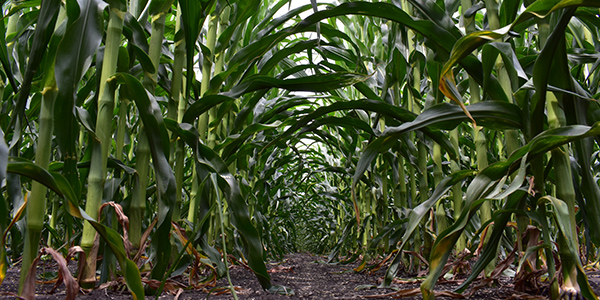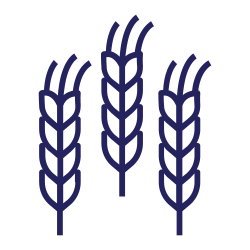Section Title
Delayed Seeding & Wet Soils
- Whole Farm
By Dane Froese
Cold, wet springs with repeated rain and snowfall events can dramatically impact planned seeding operations. As fields dry and can support seeding equipment, farmers should know how to best prepare for outcomes of later seeding dates. Management of land preparation, crop choices, fertility management, crop maturity, and yield expectations should all factor into decision-making.
Related Production Resources

By now, producers have made most of their cropping decisions for 2023. For those that have chosen to include malting barley in their rotation, this article offers some information and tips to consider for seeding and growing malt barley to… Read More

Waterhemp and Palmer amaranth are pigweeds in the genus Amaranthus. While more common members of this genus such as redroot pigweed are familiar to Manitoba farmers, waterhemp and Palmer amaranth are new to Western Canada. Not yet identified in Saskatchewan… Read More

Most species of cutworms are generalists, meaning they will feed on many types of crops and wild plants at the seedling stage, if given the opportunity. Cutworms are not often an economical concern, especially in cereal grains due to high… Read More

Manitoba farmers are well aware of the destructive abilities of wireworms. They feed below ground on many different crop types, causing early season plant stress. Feeding also results in thinning plant populations and reduced yield. Read More

Early season weed control can be key to optimizing yield and giving your crop a good head start. Even small weeds compete with your crop for moisture and nutrients while also acting as a host for insects and diseases. Controlling… Read More

This is Part 3 in a three-part series on managing extremes of moisture. Part 1 focuses on soil properties and definitions and Part 2 focuses on crop selection, pests and fertility. If you haven’t already, we recommend reading Parts 1… Read More

This is Part 2 of a three-part series on managing extremes of moisture. Part 1 focuses on soil properties and definitions. If you haven’t already, we recommend reading Part 1 first. Part 3 focuses on field activities. Read More

This is Part 1 of a three-part series on managing extremes of moisture. Part 2 focuses on crop selection, pests and fertility, and Part 3 focuses on field activities. Read More

Water demand differs by crop type. Understanding crop water requirements can be beneficial when building rotations, making fertilizer rate decisions, and making crop and landscape management choices. Read More

By now, producers have made most of their cropping decisions for 2023. For those that have chosen to include malting barley in their rotation, this article offers some information and tips to consider for seeding and growing malt barley to… Read More

Waterhemp and Palmer amaranth are pigweeds in the genus Amaranthus. While more common members of this genus such as redroot pigweed are familiar to Manitoba farmers, waterhemp and Palmer amaranth are new to Western Canada. Not yet identified in Saskatchewan… Read More

Most species of cutworms are generalists, meaning they will feed on many types of crops and wild plants at the seedling stage, if given the opportunity. Cutworms are not often an economical concern, especially in cereal grains due to high… Read More

Manitoba farmers are well aware of the destructive abilities of wireworms. They feed below ground on many different crop types, causing early season plant stress. Feeding also results in thinning plant populations and reduced yield. Read More

Early season weed control can be key to optimizing yield and giving your crop a good head start. Even small weeds compete with your crop for moisture and nutrients while also acting as a host for insects and diseases. Controlling… Read More

This is Part 3 in a three-part series on managing extremes of moisture. Part 1 focuses on soil properties and definitions and Part 2 focuses on crop selection, pests and fertility. If you haven’t already, we recommend reading Parts 1… Read More

This is Part 2 of a three-part series on managing extremes of moisture. Part 1 focuses on soil properties and definitions. If you haven’t already, we recommend reading Part 1 first. Part 3 focuses on field activities. Read More

This is Part 1 of a three-part series on managing extremes of moisture. Part 2 focuses on crop selection, pests and fertility, and Part 3 focuses on field activities. Read More

Water demand differs by crop type. Understanding crop water requirements can be beneficial when building rotations, making fertilizer rate decisions, and making crop and landscape management choices. Read More

By now, producers have made most of their cropping decisions for 2023. For those that have chosen to include malting barley in their rotation, this article offers some information and tips to consider for seeding and growing malt barley to… Read More

Waterhemp and Palmer amaranth are pigweeds in the genus Amaranthus. While more common members of this genus such as redroot pigweed are familiar to Manitoba farmers, waterhemp and Palmer amaranth are new to Western Canada. Not yet identified in Saskatchewan… Read More

Most species of cutworms are generalists, meaning they will feed on many types of crops and wild plants at the seedling stage, if given the opportunity. Cutworms are not often an economical concern, especially in cereal grains due to high… Read More
Related Research Projects
Manitoba Crop Alliance’s research program invests in research that will make every Manitoba farmer member more productive and sustainable, providing data to help members make decisions for their operations.




